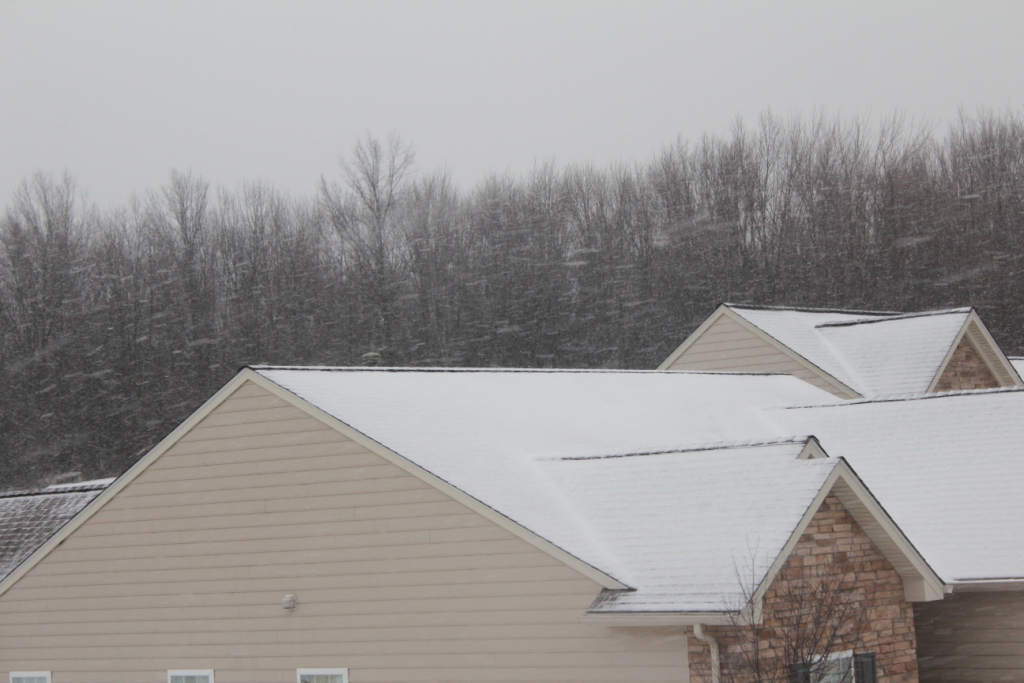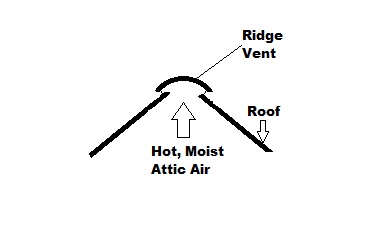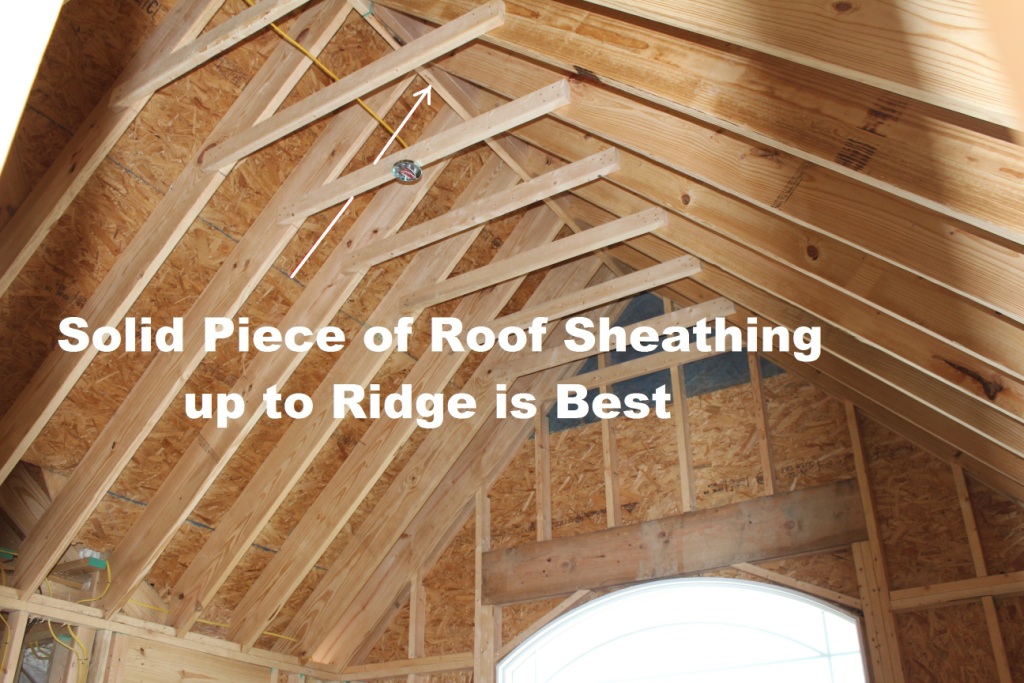Attic Snow? How it gets there and what to do About it.
0 Comments | Posted by armchairbuilder in Fix it!, Owner-Builder
Do you have attic snow? In other words…have you experienced snow accumulating in your attic? If you see new water spots on your ceiling after a windy snowfall you might have this problem. Attic snow can accumulate when the wind conditions are just right and you have ridge vents. Obviously snow is no good in the attic as it will eventually melt causing damage and possibly mold over time. So what can you do to determine if you have snow up there and what can be done to prevent it?
Ridge Vents
Ridge vents are those vents that run along the ridge of some roofs to allow the warm, moist air in the attic to escape. Air blows into your attic through perforated soffit vents at the eves and helps push the air in the attic up through the ridge vent. These vents give your roof a nice clean look and provide more open area for the hot air in the attic to escape. This should lower the temperature of your attic and lower your energy bills in the summer months.
The ridge vents are designed to cover the gap at the top of the roof…much like the hat you wear in the rain it is designed to keep rain and snow out under normal conditions. Unfortunately, if things aren’t quite right with the vent and the weather conditions are right, you can end up with attic snow. That’s right…snow in your attic.
Diagnosis
How do you know if you are getting snow in your attic? Well, if you don’t have any evidence of moisture on your ceilings, don’t waste time worrying about it. If you do get attic snow, there is a really good chance you will see moisture on the drywall below. After all, snow eventually melts and it really has no place to go but down through your insulation and onto the ceiling below. If you have wet spots or water marks on your ceiling, take a look up through your attic access panel. It’s best to look up there during or just after a blowing snow event as the evidence may quickly melt after getting in. How fast it melts depends on how well your home is insulated and vented and also depends on outside temperatures.
Preventing Attic Snow
When conditions permit (i.e. snow is off the roof and it is safe to go up there), check every inch of the vent to make sure it is tightly secured to the roof. If winds have loosened the vent, snow can blow underneath. You also want to check the ends of the ridge vent to make certain they are solid. Some ridge vents require blocks to be installed at the ends to prevent precipitation from blowing in. If you are putting a new roof on your home, talk to your roofing contractor about your options to prevent attic snow. It’s best to go with a higher quality ridge vent that will resist infiltration during the ugliest snow events.
You will also want to require your rough carpenter contractor to install large pieces of roof sheathing at the ridge. The reason being, if small pieces of sheathing are installed at the ridge, it makes it difficult for the roofing contractor to properly nail the vent to the roof. If a small rip of sheathing does inadvertently get used at the ridge, have your framer place blocking between the trusses or rafters to provide a solid place for the roofer to nail to. Click here for our new detailed Video on Attic Snow.
<< Scope of Work and Specification, How to Build a Home, Step 9





